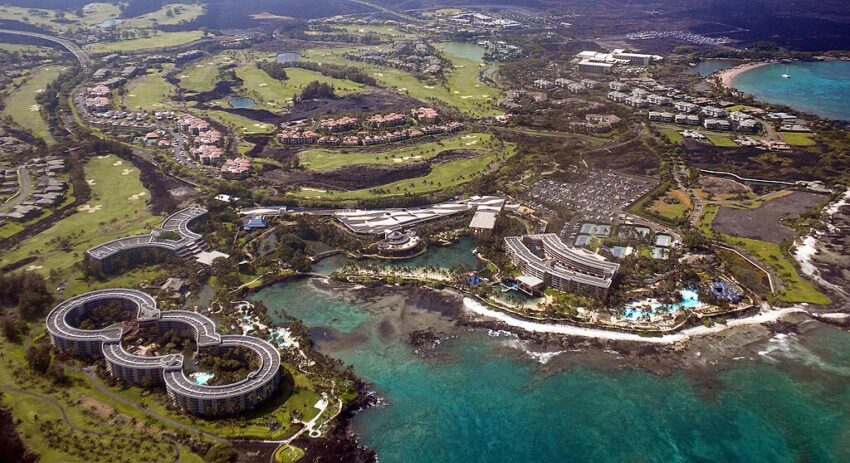Environmental Health Trust
Hawai’i County, commonly known as the Big Island, has passed an ordinance limiting how close cell towers may be constructed to homes and schools. The ordinance is the first of its kind in the island state, and Debra Greene, founder of Safe Tech Hawaii, said this “paves the way for other local jurisdictions in Hawaii to follow suit and implement similar ordinances.”
The legal team at EHT has been working with Big Island residents and Safe Tech Hawaii for months to help push this new regulation over the finish line. “The passage of Bill 24 is a notable victory because, to my knowledge, Hawai’i County, with a population of over 200,000, is the largest community in the U.S. with 600-foot installation setbacks,” said Environmental Health Trust Legal Fellow Zoe Berg.
The unanimous passing of the bill on June 19, 2025 marks a clear victory for residents, many of whom don’t feel that more wireless coverage on the island is needed, and who have fought hard to keep new cell towers at a safe distance from homes and schools. It’s notable that Hawai’i County passed a resolution in 2020 calling for a halt to 5G deployments until independent testing can determine the safety of RF radiation emissions generated by such infrastructure. And earlier this year, Hawaiian Telcom unveiled an ambitious plan to make Hawaii the first fully fiber-enabled state by 2026, which would allow all Hawaiians to rely on fiber-optic cables rather than wireless networks for internet connectivity.
“The passage of Bill 24 in Hawai’i County acknowledges that buffers between powerful, wireless radiation-emitting technology and sensitive environments like homes and schools are important to protect public safety and public health,” Zoe Berg said. “We thank Debra Greene and all of the residents of Hawai’i County for their hard work in getting Bill 24 passed. We also thank the honorable members of the Hawai’i County Council for supporting more responsible, thoughtful wireless telecommunications infrastructure siting throughout the county.”
Both Verizon and AT&T submitted letters to the council expressing concerns about the setback requirement and requesting waivers, which ultimately were not granted. The final bill nonetheless represents a compromise; the process for telecom companies to get their towers permitted has been simplified, but those towers must be verified to survive winds of 100 mph or more, and in many of the county’s zones placed more than 600 feet from homes and schools (with exceptions for emergency communications facilities) and at a minimum distance of 120% of the height of the tower from all property lines. This is notably safer than the requirements on Oahu, where towers can be at a distance of only one fifth the tower’s height—putting private property at risk from falling towers.
With this new law, Hawai’i County joins dozens of communities across the United States which have passed ordinances regulating size and placement of cell towers with consideration to public safety, including cities and counties in New Hampshire, New York, California, and Massachusetts. Internationally, dozens of countries in the EU and beyond have implemented policies aimed at reducing children’s exposure to cell phones and wireless radiation.
If you would like to take action in your community to promote safer siting of cell towers, protecting vulnerable populations as well as property values, read Environmental Health Trust’s Action Steps on Cell Towers near Homes. This page includes links to scientific evidence, legal precedents, resources for organizing, and more to help win a local campaign for safer cell tower placement.
[…]
Via https://ehtrust.org/hawaii-county-passes-law-keeping-cell-towers-away-from-homes-and-schools/
Click this link for the original source of this article.
Author: stuartbramhall
This content is courtesy of, and owned and copyrighted by, https://stuartbramhall.wordpress.com and its author. This content is made available by use of the public RSS feed offered by the host site and is used for educational purposes only. If you are the author or represent the host site and would like this content removed now and in the future, please contact USSANews.com using the email address in the Contact page found in the website menu.








